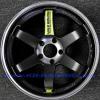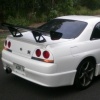turbo choices
12 members have voted
Announcements
-
Similar Content
-
Latest Posts
-
Well, I want to move to AN8 fittings, and the OEM has a barb. And I plan on doing these things first, as I can do them, and if the problem persists after I will then take it to a mechanic.
-
Definitely do just gotta pay for your own ticket and hotel rooms lol
-
What's wrong with the OEM filter. They do the job perfectly. As to your actual problems. Stop driving the. Take it to a mechanic. If you actually do have a fuel delivery limitation and you are putting it under load, you could be killing it.
-
Enjoy Japan! Need someone to carry your bags........??
-
I don't know the answer, but my uneducated guess is this will not work (or, not as you want it to). I would wire the SLD into VSS1, I bet that is what the limiter uses However, I also bet the ECU compares VSS1 and VSS2 and throws and error if they are different. Best suggestion I can make is wire it into VSS1 and see how you go, I guess the error will only appear above 180 when then SLD is active. If it appears at lower speeds put a switch into the SLD earth (or power supply) and only turn it on when you need to go over 180.
-






Recommended Posts
Create an account or sign in to comment
You need to be a member in order to leave a comment
Create an account
Sign up for a new account in our community. It's easy!
Register a new accountSign in
Already have an account? Sign in here.
Sign In Now